Do a simple timing:
In [233]: x = np.random.random(100000)
In [234]: timeit np.sort(x)
6.79 ms ± 21 µs per loop (mean ± std. dev. of 7 runs, 100 loops each)
In [235]: timeit x[np.argsort(x)]
8.42 ms ± 220 µs per loop (mean ± std. dev. of 7 runs, 100 loops each)
In [236]: %%timeit b = np.argsort(x)
...: x[b]
...:
235 µs ± 694 ns per loop (mean ± std. dev. of 7 runs, 1000 loops each)
In [237]: timeit np.argsort(x)
8.08 ms ± 15.3 µs per loop (mean ± std. dev. of 7 runs, 100 loops each)
Timing only one size doesn't give O complexity, but it reveals the relative significance of the different steps.
If you don't need the argsort, then sort directly. If you already have b use it rather than sorting again.
